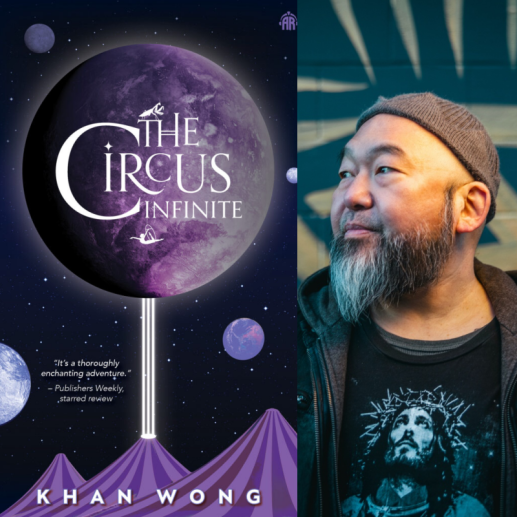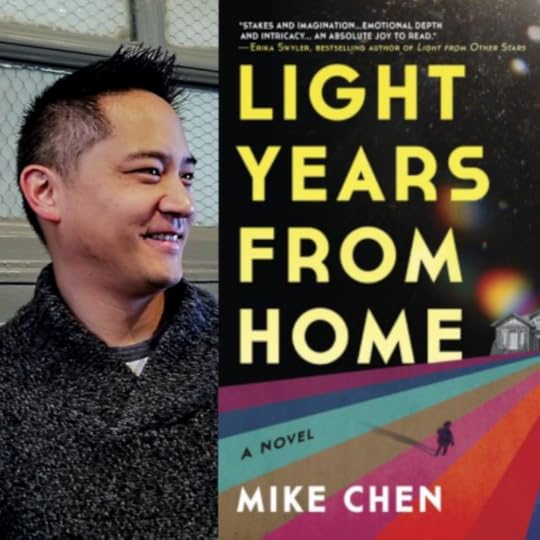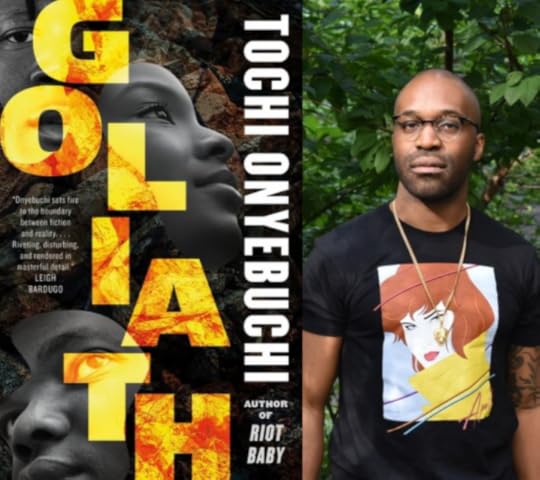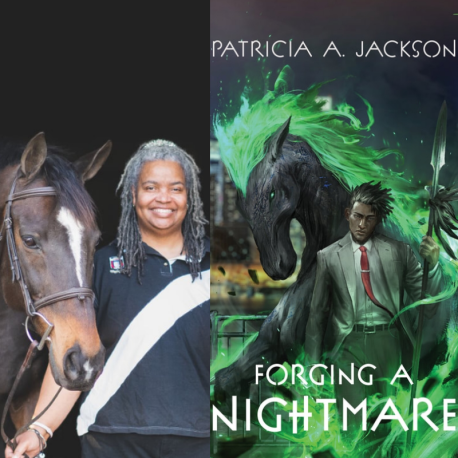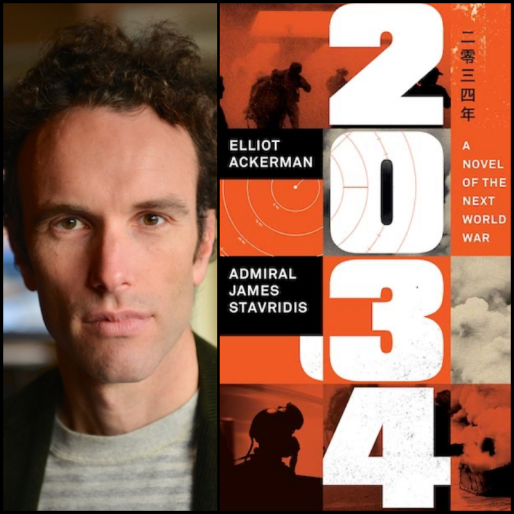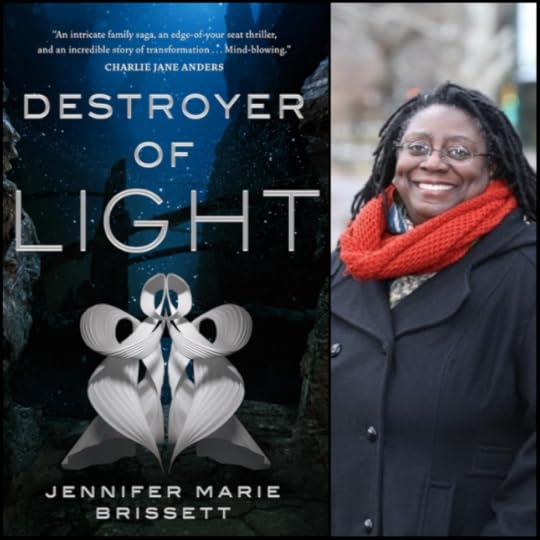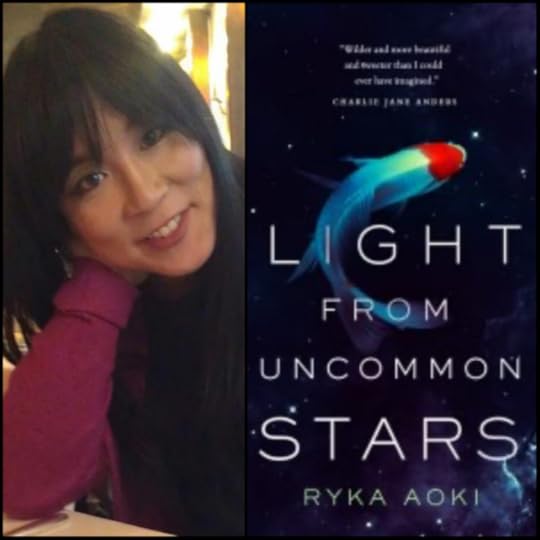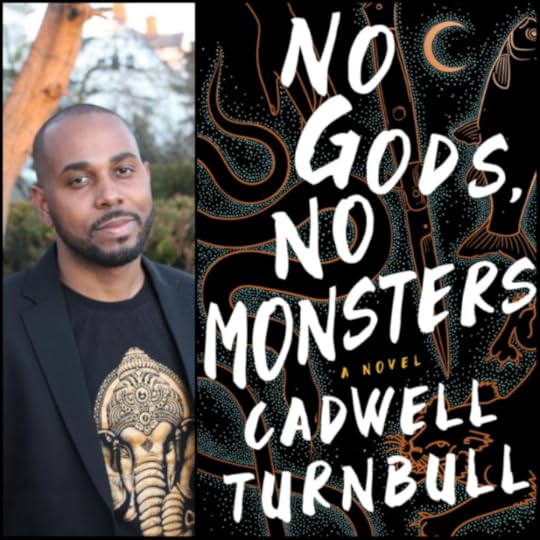Rob Wolf's Blog, page 2
May 5, 2022
Khan Wong’s Young Hero Seeks Freedom and Self-Acceptance in The Circus Infinite
Few writers are as qualified to set their book in a circus as Khan Wong, who has not only performed in a circus but is an internationally recognized hula hoop virtuoso.
While Wong’s descriptions of acrobats, clowns and fortunetellers are grounded in real life, the pleasure moon that is the setting of his debut novel, The Circus Infinite, arises entirely from his formidable imagination.
Persephone-9 is a Las Vegas-like destination for members of the 9-Star Congress of Conscious Worlds, an alliance of nine species that includes humans. Into this diverse and raucous setting comes Jes, a young man with the unique power to manipulate gravity. A self-described asexual panromantic, Jes is on the run from a sadistic researcher who has tortured him in the name of science. And yet just as Jes starts to find love and acceptance in the circus, he confronts a new nemesis: a blackmailing crime boss who seeks to exploit his psionic abilities.
Writing an asexual character “was liberating,” Wong says. “I myself have come to realize my own identity as being on the asexual spectrum later in life. When I was younger, I didn’t have the vocabulary. And certainly there was no Internet to find community about it growing up. … But I always found myself kind of uncomfortable in hypersexualized spaces and never really understood why.”
“Also, I was fascinated by the idea of an asexual empath in a hypersexualized location like a pleasure moon. A lot of people are there to party and to get laid and to indulge their kinks and whatever. The book doesn’t go super into explicit detail on that front—it’s not erotica. But I was fascinated by a character who had empathic abilities, who could sense these feelings from other people but didn’t really experience them naturally himself.”
March 10, 2022
Different Versions of ‘Truth’ Split the Family in Mike Chen’s Light Years from Home
Literature is full of families torn apart by tragedy—death, war, crime. But what if the members of a family can’t agree on the cause of the tragedy that divides them?
In Mike Chen’s new novel, Light Years from Home, sisters Kass and Evie agree that their brother Jacob vanished 15 years ago. But did he runaway to party to his heart’s content, as Kass believes, or was he abducted by aliens, as Evie thinks? Their starkly different interpretations of the facts exacerbates the pain and tragedy of their brother’s disappearance, pushing the family to the point of breaking.
Read an excerpt of our conversation about Light Years from Home on Literary Hub.
“One of the things that I really wanted to show was how a single moment can really change the trajectory of people’s lives,” Chen on New Books in Science Fiction. Jacob’s disappearance “fundamentally changes the direction of this family. Kass has this attitude of ‘if no one else is going to fix it, I am going to fix it.’ And Evie has the same attitude, except she thinks about it as ‘I’m going to fix it by going with my dad on like these UFO hunts, and we’re going to find my brother’ and their mom
wants to just move forward because that’s the only way that she knows how to do it. … They’ve all gone in a completely different angle because this disaster has happened to them and none of them know the truth.”
Mike Chen, a three-time guest on the podcast, is the author of Here and Now and Then, A Beginning at the End, We Could be Heroes, and Star Wars: Brotherhood.
February 17, 2022
Gentrifiers Return to Earth Seeking Virgin Land Where None Exists in Tochi Onyebuchi’s Goliath
https://traffic.megaphone.fm/NBN8530928015.mp3
Tochi Onyebuchi’s new novel Goliath features a phenomenon familiar to those of us who live in cities—gentrification.
Like the gentrifiers of today, who push out old-timers with high rents and coffee boutiques, Onyebuchi’s urban colonizers are taking over property in communities that have suffered from underinvestment and systemic racism.
But unlike gentrifiers of today, who often leave behind comfortable lives in the suburbs, the gentrifiers in Goliath are returning from comfortable lives on space stations where those with means had fled years earlier to escape pollution and environmental degradation on Earth.
Onyebuchi sees in the story of David and Jonathan—returnees from who take over a home in a Black and Brown community in New Haven—parallels to frontier narratives.
“I’ve read a lot of westerns and western-inflected literature, and the ways in which people have written about the American West were very fundamental in how I approached the characters of David and Jonathan,” Onyebuchi tells in the new episode of New Books in Science Fiction. “You have people going out west historically for all sorts of reasons. ‘Oh, that’s where my fortune is.’ Or they’re like, ‘Oh, like, there are no rules out there. I can totally remake myself.’”
In David and Jonathan’s case, they’re relationship is broken. “They think, ‘Oh, if we just change the scenery, that’ll make things better, we’ll be able to start over.… We can make this work on Earth. It’s virgin territory, this place where we can build something together.’ That in many ways is the animating impulse, of course, completely or almost completely disregarding the fact that Earth is already home to a lot of people.”
Tochi Onyebuchi is the author of the Beasts Made of Night series; the War Girls series; and the non-fiction book (S)kinfolk. His novel Riot Baby—which he discussed on the podcast in 2020—was a finalist for the Hugo, Nebula, Locus, and NAACP Image Awards and winner of the New England Book Award for Fiction, the Ignyte Award for Best Novella, and the World Fantasy Award. He has degrees from Yale, New York University, Columbia Law School, and the Paris Institute of Political Studies.
January 6, 2022
Dan Hanks, with Help from a Killer Santa, Shows the Dark Side of Nostalgia in Swashbucklers
Most people believe that when they grow up, they need to “put away childish things”—a wise strategy for holding a job, paying the rent and raising a family. But what if you need to fight a malevolent pirate who threatens to destroy the universe? In that case, a toy War Wizard blaster might come in handy.
In British author Dan Hanks’ second novel, Swashbucklers (Angry Robot, 2021), the four lead characters arm themselves with War Wizards and other toys retrofitted to inflict maximum damage as they try to stop an evil that threatens their town and the world.
“The idea originally was to do a Ghostbusters thing, but then it became about ‘How would the Ghostbusters do their jobs as parents?’” Hanks says. “How would the Ghostbusters have dealt with fighting ghosts while also trying to find babysitters and go to nativity plays and things like that? What if the Goonies had all grown up and they had their own kids?”
The story addresses the power and limits of nostalgia while remaining firmly rooted in the contemporary world, juxtaposing the surrealness of events like Brexit and the pandemic with the absurdity of a giant inflatable Santa Claus stomping on shoppers in the heart of Manchester.
The heroes hail from a town based on Hanks’ home. “I used my local bookstore, the local café that is a big favorite of mine. I got everyone’s permission before I threw them into the book,” Hanks says. “It’s such a beautiful part of the world, and I kind of wanted to just trash it a bit with some supernatural crap. And I did.”
Hanks lives in England’s Peak District. He is the author of Captain Moxley and the Embers of the Empire. He also writes screenplays and comics.
December 16, 2021
Patricia A. Jackson Dreams of Angels and Demigods in her Debut Fantasy Forging a Nightmare
Patricia A. Jackson’s debut novel Forging a Nightmare immerses the reader in a world of menace—fallen angels and demigods whose history of alliances and resentments stretch to the beginning of time. Jackson puts a fresh spin on biblical characters like Gabriel and Lucifer by turning them into FBI agents, a parish priest, a homeless preacher and other seemingly ordinary folks who pursue ancient vendettas in modern day New York City.
On the surface, the story is about a series of grisly murders. But underneath, it is about much more: a son grappling with his father’s abandonment, the persecution of “the other” and the revelation that maybe Hell isn’t the unremittingly evil place we thought it was.
The hero is Michael Childs, a Black FBI agent who competes in jousts (at the opening of the book, he shows up at the scene of a grisly murder clad in medieval armor) and who (unbeknownst to him) descends from divinity. His sidekick is Anaba Raines, a Black former Marine and the eponymous Nightmare, whose transformation into a fierce and hellish horse makes her a formidable foe to angels seeking to do Michael harm.
Like Childs, Jackson is an experienced equestrian. “I think every character is an extension of the author, and I am Michael Childs,” Jackson says. “I would go to horse shows and I would be in my boots and my breaches and my show jacket, and I would go to the mall or I would go to the bank, or I would go to the jewelry store dressed in my duds, sometimes with odor of horse upon me. And people would just kind of look around. And it wasn’t just because you were dressed in horse gear. You are a Black girl dressed in horse gear, and they had never seen that before.”
November 26, 2021
In 2034, Elliot Ackerman and James Stavridis Offer a Cautionary Tale about the Next World War
The next world war is 13 years away—that is, if you live in the world envisioned by Elliot Ackerman and James Stavridis in their novel 2034: A Novel of the Next World War.
When writing about the intersection of combat and diplomacy in their near-future thriller, the co-authors draw from personal experience. Ackerman worked in the White House and served five tours of duty as a Marine in Iraq and Afghanistan, while Stavridis, a retired United States Navy admiral, served as NATO Supreme Allied Commander Europe.
2034 plays out a what-if scenario, starting with an incident between the Chinese and U.S. that escalates into a major conflict. “You could certainly say right now, vis-a-vis the United States’ relationship with China, that if we’re not in a Cold War, we are at least in sort of the foothills of a Cold War,” Ackerman tells me on the new episode of New Books in Science Fiction.
Told through the eyes of multiple main characters from five nations, war begins to seem inevitable as deceit, posturing, and a game of chicken makes it harder and harder for the countries’ leaders to back down. In real life, Ackerman feels that a conflict between the U.S. and China is possible—but not inevitable. “It’s a cautionary tale. There’s still time to take the exit ramp,” he says.
November 4, 2021
Jennifer Marie Brissett Brings the Myth of Persephone and Demeter to a New World in Destroyer of Light
Destroyer of Light is Jennifer Marie Brissett’s long-awaited follow up to her critically acclaimed debut Elysium, winner of a Philip K. Dick Special Citation and a finalist for the Locus and the Tiptree awards.
Elysium is set on Earth after people have been wiped out by aliens while Destroyer of Light takes readers to another planet and far into the future to meet the humans who survived Earth’s destruction.
Listen to a 2015 interview with Jennifer Marie Brissett about Elysium.
The frame of Destroyer of Light is a mystery—a search for a missing boy. But the deeper story is about the relationship between a mother searching for her young daughter, who is kidnapped and abused by a warlord overseeing an army of child soldiers, and the relationship between humans and their former antagonists, the four-dimensional aliens known as the Krestge. Though the Krestge destroyed civilization on Earth, some of their descendants now live peacefully among humans, and while some humans are willing to forgive the crimes of the past, going so far as to start families with the Krestge, others see the crimes of the aliens’ forbears as unforgivable.
“There’s a lot of difficulty in answering questions as to what kind of people the Krestge are because to get to know one is not to get to know all. The first alien you meet in the beginning, the step-father of the missing [human] boy, is really worried about his son and wants to do everything he can to try and find him,” Brissett tells me on the new episode of New Books in Science Fiction.
Read an excerpt of our conversation about Destroyer of Light on Literary Hub.
“And yet I think the distrust that humanity has for the Krestge is not unfounded, and it’s not without its history and not without its reason. The feeling of not being told the entire truth, of not owning up to past sins, to just sort of pretending that it all just went away because you’ve decided to not be that anymore, doesn’t really happen.”
October 14, 2021
Donuts, Violins and Aliens Fuel Self-Discovery in Ryka Aoki’s Light from Uncommon Stars in
Ryka Aoki’s new novel, Light from Uncommon Stars, is packed with as much variety as a box of lovingly prepared assorted donuts from your favorite, funky-but-long-standing neighborhood donut shop.
One of the book’s primary settings is, in fact, a donut shop, but unlike other Los Angeles donut shops it is run by a family of refugees from a faraway galaxy.
The story revolves around three women—the matriarch of the outer space family, Lan Tran; Shizuka Satomi, a world famous violin teacher, who is also contractually obliged to deliver souls to hell; and her newest student, Katrina Nguyen, a trans runaway fleeing an abusive home who has no formal violin training but is a brilliant musician with natural talent.
With a book focused on musicians, Aoki relied on narration to convey the power of Katrina’s performances. “When one is a poet and writing novels, sometimes … I feel at a horrible disadvantage. I still write at the speed of a poet. … But during certain moments, I’m really glad I’m a poet because I know darn well that I can convey music through words. … I can use imagery. I can use analogy, but mostly I can vary my sentence structures. I can play with clauses. I can concatenate my grammar. I can write sentences so that one sentence jams into the next. I layer sentence fragments occasionally to build a collage of meaning. And these are all things that are poet tricks.”
The themes of Light from Uncommon Stars are as varied as its cast. The books is about talent and genius, creativity and love, and the sacrifices—or deals with the devil—that some people may make to achieve success.
Ryka Aoki is a poet, composer, and teacher. Her mixed collection Seasonal Velocities and poetry collection Why Dust Shall Never Settle Upon This Soul were both finalists for the Lambda Literary Awards. And is also the author of the novel Hey Mele Ah Hilo.
September 23, 2021
Monsters Demand Visibility, Acceptance and Safety in Cadwell Turnbull’s No Gods, No Monsters
https://traffic.megaphone.fm/NBN9248018791.mp3
Cadwell Turnbull appeared on New Books in Science Fiction two years ago to discuss his debut novel, The Lesson, about an alien invasion and colonization of Earth, centered around Turnbull’s native U.S. Virgin Islands.
He returns in this episode to talk with me about his second book, No Gods, No Monsters, which, rather than aliens from another planet, features monsters who live among us as our friends, neighbors and even relatives. While ostensibly about the fantastical, the novel is grounded in reality with complex characters whose experiences touch on difficult but important issues like police violence, othering, and even fake news.
While the two books have different characters and storylines, Turnbull calls them “sister books.”
Aliens and monsters “are both versions of human fears manifested through these speculative elements,” Turnbull says. “One is dealing with a threat from without, and one is dealing with a threat from within. And they both have similar thematic concerns.”
Among the topics we discuss are the human propensity to deny uncomfortable truths; the challenge of those with different beliefs accepting the same version of reality (even when reality is captured on video); how monsters can provide a window on intersectional marginalization; and how writing can be like solving a puzzle.
September 2, 2021
Stories Within Stories Turn S. Qiouyi Lu’s In the Watchful City into a Cabinet of Curiosities
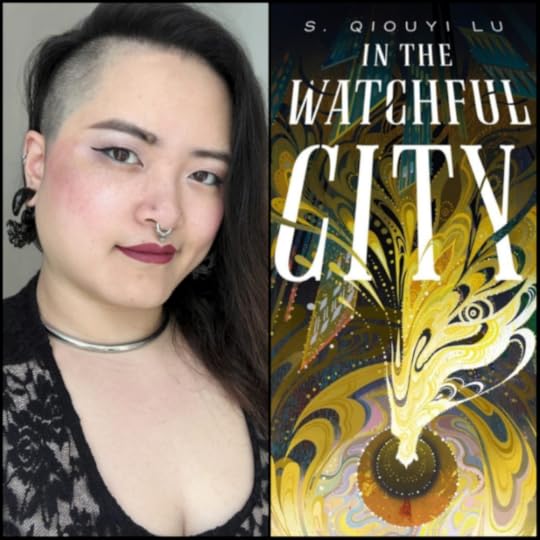 Author photo: © S. Qiouyi Lu
Author photo: © S. Qiouyi Luhttps://traffic.megaphone.fm/NBN2863599648.mp3
It’s no coincidence that one of the main characters in S. Qiouyi Lu’s In the Watchful City carries with ser a qíjìtáng, or cabinet of curiosities. Lu’s novella is, itself, a cabinet of unusual mementos, with many smaller objects carefully folded into the larger structure.
On one level the plot is simple. The qíjìtáng is full of stories, and its owner, Vessel, who hovers between life and death, needs to add one more story to ser collection in order to have a second chance at life. (Vessel’s pronouns are se, ser and sers). So se asks Anima, one of eight people who provide surveillance for the city-state of Ora, for aer story. (Anima’s pronouns are ay, aer and aers).
But Anima’s life isn’t so simple. Ay serves as a node in the city’s Hub, which ay monitors by entering the consciousness of animals (including a gecko, raven, and wild dog during the course of the story). In this way, ay can travel anywhere and yet aer body is fastened by a stem to a tank of amniotic-like fluid.
Lu likens Anima’s experience of being both fixed and all-knowing to our relationship with the internet. “We’re sitting in front of a computer, and, physically, our body is stationed in front of this machine. But through this network, we’re able to explore so much,” Lu says. “We’re able to go to faraway lands, see through the eyes of someone else.”
The topics ay covers in aer New Books interview include aer inspirations for the novella (such as China’s facial recognition technology), aer interest in linguistics, including neopronouns, and aer fascination with experimental narratives.
Lu is also a poet, editor, and translator and runs microverses, which publishes speculative flash fiction, poetry, and other short forms of storytelling.

